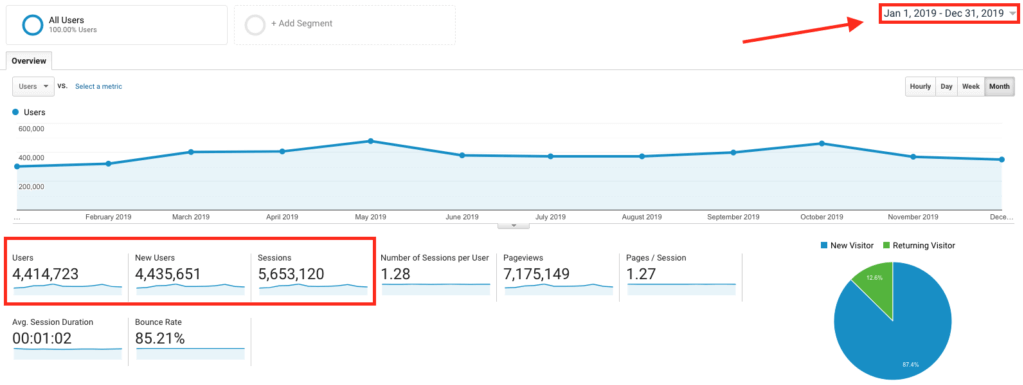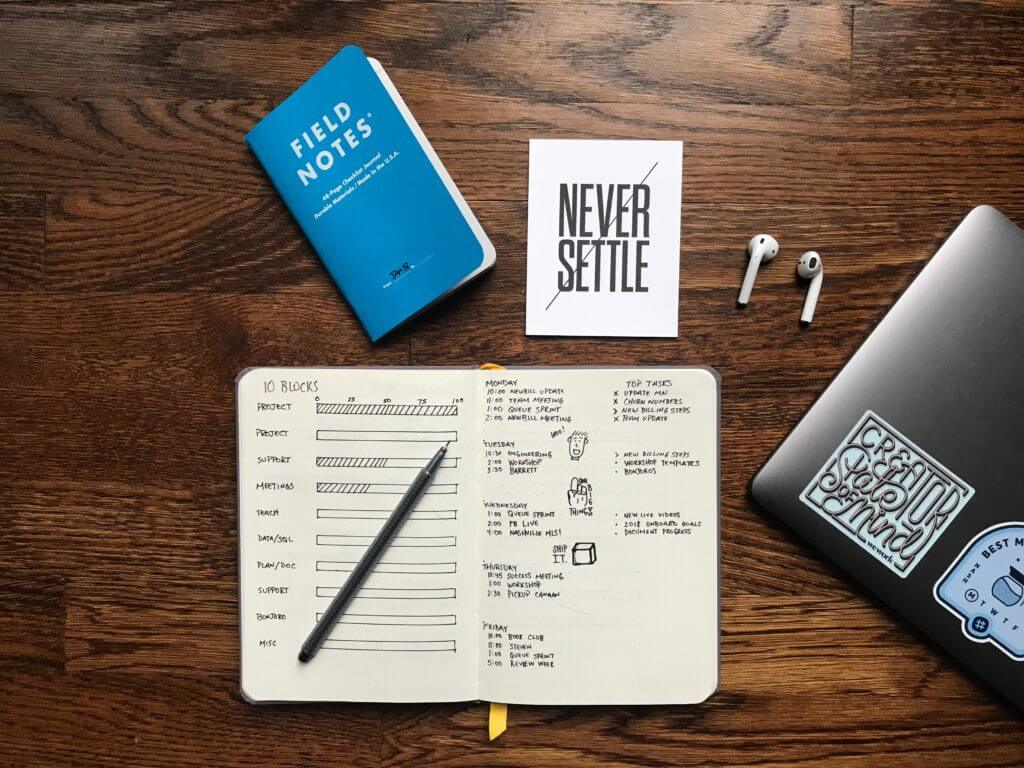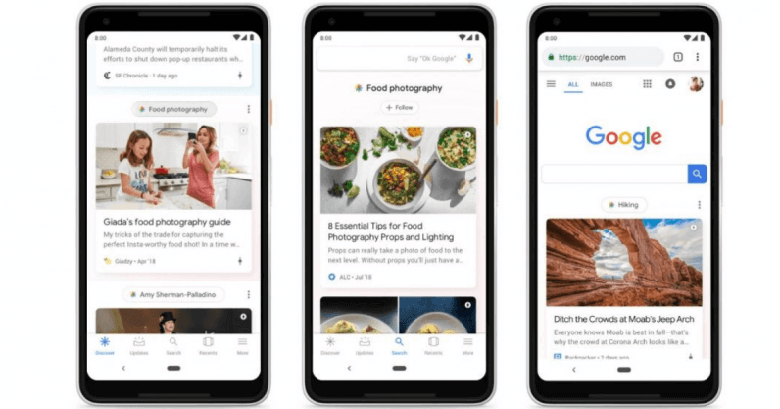How To Blog And Drive People To Website
It's easy to hit publish on your website (or first blog post), kick back and wonder… where is everyone? If you want proven strategies for how to drive traffic to your blog—or company website—then you've come to the right place.
How to Drive Traffic to Your Blog (32 Best Ways to Increase Blog Traffic) in 2021
- Go Deep and Create Share-Worthy Content
- Nail Your On-Page SEO
- Optimize for Long-Tail Keywords
- Start Building an Email List (Now)
- Guest Posting (the Right Way)
- Publishing Quote Roundups
- Strategic Pre-Linking in Your Content
- Natural Link Building
- Interview Thought Leaders
- Content Partnerships with Bloggers and Brands
- Land a Publication Column
- Regularly Sharing Images on Pinterest
- Creatively Writing on LinkedIn
- Being Proactive on Facebook
- Standing Out on Instagram
- Using Twitter to Create a Loyal Community
- Answering Questions on Quora
- (Carefully) Engaging on Reddit
- Sharing in Facebook Groups
- Being Active in Niche-Focused Online Communities
- Get Interviewed on Podcasts
- Launch a YouTube Channel
- Host Webinars
- eBooks, Books and Audiobooks
- Offer Free Downloadable Templates
- Host a Virtual Summit
- Teach Online Courses
- Launch a Creative Side Project
- Google Discover
- Speak at a Conference
- Get on Local Television
- Utilize Paid Search and Social Advertising
Disclosure:Please note that some of the links below are affiliate links and at no additional cost to you, I'll earn a commission. When you purchase a product or service using my affiliate link, I'm compensated, which helps make content like this free of charge to you. Know that I only recommend products and services I've personally used and stand behind.
Why am I qualified to teach you how to drive traffic to your blog?
Over the past 6+ years, I've gone from fumbling around with learning how to start a blog to now bringing in over 4.4 Million readers to this blog in the last year alone.

I say this not to brag, but to show youI actually know what I'm talking about here. And to prove that I've been putting my traffic driving and blog promotion strategies to use right here—with overwhelming success.
Because when it comes to learning how to drive traffic to your website, there are literally millions of articles out there stating they're the best—many of them written by people who claim to be expert marketers with a secret formula (that always seems to cost just $99.99 for some reason).
Well, I've done the actual work. I've experimented. I've tested. I've failed. I've learned. I've succeeded when it comes to learning how to drive traffic to your blog.
Should you use all of these strategies or focus on just a few?
The purpose of this guide isn't to be a clear step-by-step instruction manual for driving traffic to your blog—rather, it's a list of all the different (real) types of strategies that could work well in driving traffic to your website. Think of this as a menu of options, from which you should choose 2 or 3 strategies to experiment with at a time.
This isn't a guaranteed roadmap to success, because it'll take a lot of experimentation and creativity to learn, adapt and apply to your unique situation. On top of that, you should NOT be using all of these methods to drive traffic to your blog at the same time. You literally don't have enough hours in the day. This should be a list you can draw inspiration from, and the tactics that stick out are the ones you should start implementing.
The ultimate blogging goal should be to build a cohesive blog strategy for your website of tactics to drive traffic that are working when you put time and effort into them.
Aim for depth on a few traffic driving strategies, not breadth of a million of them.
Jumping haphazardly from blogging advice to more advice without giving things time to grow and develop is never going to work. When a strategy is starting to show positive signs, dig deep and prioritize executing that strategy really well so that it can live up to its full potential. That's how to grow your blog in the long run.
In fact, you should be spending a lot of time figuring out what the best way is to promote your blog content—I try to live by the 80/20 rule. I spend 80% of my time promoting my content, or figuring out the best way to promote it, and only 20% on the actual writing. Obviously, the quality of the writing is important, but it doesn't matter how good it is if you aren't spending the time to get it out there.
How do you prepare your blog (before driving in traffic)?
Like it or not, you have to make sure you're ready to drive traffic to your blog before you actually start testing strategies to increase your blog traffic.
If you're looking at your blog right now and all you have is a simple landing page, some contact information, and a few products up for sale… sorry, but you're probably not quite ready to start devoting time to driving traffic to your blog.
In the beginning, it's nice to think that a committed and engaged audience will just fall into your lap if you reach out to the right people and follow the right steps, but it's just not that easy. You need to make sure your website is set up the right way and is designed to resonate well with your target audience. More on that in my guide to starting a blog.
Before you start figuring out how to drive traffic to your website (or make money blogging for that matter), you have to determine whether you're ready for that traffic in the first place. Then you'll need to strategize on coming up with the right blog post ideas that'll capture your reader's attention when they come across your content.
So, what does it take to get ready to drive traffic to your blog?
My first four strategies to drive traffic to your website are very foundational. Implementing these best practices are what will position you to actually experience a stronger return from the rest of these ways to drive traffic to your website that we're covering today. If you've already graduated from the basics of figuring out what a blog is… to choosing the right website builder and making your website, then let's move forward.
Now, let's get started with some foundational best practices first. These first four strategies are the steps you'll need to take, in order to make sure you're prepared for (and deserving of) all the traffic you want to drive to your blog.
Implementing Foundational Content Best-Practices to Drive Traffic to Your Blog
Kicking things off with making sure you're actually creating great content (that's worthy of readers)…
1. Go Deep and Create Share-Worthy Content.

Have you ever heard the phrase, "It's easier sell gold than it is to sell shit"? Well, have I got some news for you. No website starts out as minted gold right off the bat, so make sure you're not trying to peddle, well… you know. In the beginning, a lot of websites try to create useful content on their blog for their audience, but end up churning out all the same 500-1,000-word articles offering the 10 quick steps to achieving this or that. Not only is there no shortage of that content on the Internet already, but recent blogging statistics show its the last thing that'll make you stand out from the crowd and forge a lasting impression on your readers.
If you go for depth in your content, instead of breadth, promotion will become so much easier. Look at what everyone in your arena is providing and if you can show up to the 500-word advice post party with a 5,000-word step-by-step guide that actually helps people… then your readers will notice that. You'll not only have a much greater chance of selling people on the quality of your content, it'll be more likely to go viral, Google will rank it higher in the organic search because it'll be longer and more in-depth.
This is by far the single best piece of advice I can give you when it comes to learning how to drive traffic to your blog: Create standout content that helps your readers in a more meaningful way than others currently do. If you can successfully do that, you'll be rewarded for it.
2. Nail Your On-Page SEO.

Learning the right blog SEO strategies and best practices of using target keyword phrases should be your top priority. You should learn how to do keyword research—and use those core target keywords when you write a headline, throughout the article, and in your image file names, there are a lot of other best practices to get familiar with, like making your URL SEO-friendly and using keyword synonyms. There's a lot to learn, but my guide about on-page SEO best practices will get you fully optimized.
If you want some help – because wow that can seem overwhelming at first – consider installing a plugin like Yoast SEO if you're using WordPress. Yoast is a blogging tool that guides you through the steps of optimizing your page with a wizard that tests your page and asks you questions about your keyword.
3. Optimize Your Content for Long-Tail Keywords.

If your site already has a high domain authority (DA), you don't have to worry about this step. If you don't know what I'm talking about, domain authority is a search engine ranking score that ranges from 1 to 100, and it predicts how well the site will rank in result pages—it's based on age, popularity, and size. Your brand-new blog will have a ranking around 1 (sorry), while Facebook has a ranking of 99. As you get bigger and better, your DA score will get higher.
Because your site likely has a really low score, you'll want to do your keyword research to start targeting the most relevant terms and phrases—but don't go for the big ones like "business ideas" because you'll have an incredibly hard time ranking for those top-level keyword phrases early on. Instead, aim for long-tail keyword phrases, like "monthly web hosting plans" and you'll have a better chance at ranking—fun fact: that's a real example of a long-tail keyword I use for my blog.
4. Start Building an Email List. Like, Yesterday.

You aren't going to get very far if you don't know who your readers are and you're not making an effort to communicate with them on a more personal level.
The first step of nailing your blog email marketing is creating a sign-up widget in your posts and on your site for a newsletter—which is one of the most powerful ways to keep your readers excited about the work you're doing. Consider using a tool to manage your lists by evaluating ConvertKit vs AWeber vs Mailchimp to see which fits your needs best.
Still reading along with my guide about how to drive traffic to your blog? Great!
Now that you've gotten yourself ready, it's time to progress beyond just the foundational must-do's and dive in to more of my top strategies for driving traffic to your website. I'm going to cover things like content outreach methods, social media strategies, partnerships and other creative ways to drive traffic to your blog.
However, like we talked about at the beginning, this is not a comprehensive list of everything you should be doing to drive traffic to your blog today. You should be testing out the strategies that you think could work well in your blog niche—and if one does work, put a lot of energy into getting as much traffic from the channel as possible (until it doesn't work anymore).
Now, let's keep moving on my list of creative ways to drive traffic to your blog.
Using Content Outreach to Drive Traffic to Your Website
Get ready to put the pen to paper with effective blogger outreach—metaphorically speaking, that is.
5. Guest Posting (the Right Way).

There are a lot of different avenues you can go about guest blogging, and I've tried quite a few different methods. The first is finding related bloggers in your field and reaching out to see if they'll accept a guest post from you–you'll have to do a lot of trial and error with this, because you'll get a lot of rejections, but reaching that new audience can really pay off.
Another tack you can try is to post on a site with a different sort of established audience, like Medium or Quora. I've used Quora quite a bit to look for someone asking a question that's really in my blog niche, and a providing long, detailed, super helpful answer. Final quick suggestion: if you're in a more business-y niche, try LinkedIn!
6. Publishing Quote Roundups.

When I'm doing research for a piece I'm going to write, I'll send emails out to influencers who are authorities in the area I'm writing about. I'll ask them for a quote to include in the blog post, and ask them a single question—this is how I do it, if you're interested. I don't worry too much about non-responses or rejections, because as long as a few of them write back, I've got a solid contribution for my post (like in this roundup of useful blogging tips from the pros). Because they're authority figures, it not only lends the article credibility, but if they happen to share the post, I'll get exposure to their audience as well.
7. Strategic Pre-Linking in Your Content.

Mentioning brands, articles, and related influencers within a piece is always a great opportunity to promote your content. When I publish a post, I aim to have between 10 and 20 outbound links in the piece, from pull quotes to mentions. When I post the article, boom, I have 10 to 20 people to email to let them know I featured them. I'll ask them to share the piece with their followers on Facebook, Twitter, or LinkedIn.
Bonus: These content promotion relationship doesn't have to end there. I'll often go back and ask if they want to collaborate with me further, through partnerships like taking a guest blog post or finding other win-win ways to surface our content to each other's audiences on a regular basic to help us both drive traffic to our blogs.
8. Natural Link Building.

Natural link building, put simply, is getting high quality links from other sites to point toward your own blog. This will increase your DA (domain authority), as we talked about before, and you'll drive traffic to your blog as a natural side effect of an increasing domain authority. To be clear though, there are only a few ways to do this safely, naturally and following blog SEO best practices:
- Guest post swaps. This is a win-win content partnership, in which you write a guest post for their blog with a link or two back to yours, and they do the same. You'll also usually agree to promote the guest post (they'll do the same), to help drive traffic to your blog and get more readers from a targeted source back to your website.
- Dead links. There are many blogging tools that can help you find articles with dead links in them—if the link was supposed to go to an article in the same field as yours, why not contact the editor of that website and ask them to update the page and link to your more relevant (live) article instead?
- Creating a standout resource. If you've invested heavily into creating a truly unique, standout piece of content that's worthy of reputable websites linking to as a great resource—like my exhaustive roundup of the best web hosting plans for bloggers or my industry-leading blogging statistics—then it's worthwhile to spend some time reaching out to publications and other bloggers that cover these subjects to see if they'd be interested in writing about your resource. If it's something that'll genuinely benefit their readers, then you can make a very compelling pitch about why they should cover your content. Now that's how to drive traffic to your blog and attract high quality backlinks the right way.
- Comparisons and reviews. If you find yourself regularly talking about (or recommending) a product or service to your audience, then it can pay dividends to publish in-depth reviews and comparison articles that'll have a strong chance of ranking high in organic search results, due to lower competition on these types of keyword phrases. Take for example my comparisons of the top cheap hosting plans on the market today, my tutorial about shared hosting, or the most reliable free hosting plans—each of these content pieces seeks to educate readers about how to best make an often difficult decision between somewhat comparable services. These kinds of articles are also designed to attract natural links from other authoritative websites when they're looking for things like reputable Bluehost reviews to use as a source they can cite.
When link building, just be careful not to engage in behavior that search engines frown upon, such as link exchanges or paying to acquire backlinks—those are both traffic driving strategies to avoid as they'll do more damage in the long-term.
9. Interview Thought Leaders.

This is one of my favorite ways to connect with other entrepreneurs like myself, chat with them, and usually learn quite a bit – I feature them on my podcast, The Side Hustle Project. I started the podcast as a way to feature thought leaders in my industry and learn about what it took for them to succeed in their side hustle – and it's the perfect opportunity for content outreach too. When the podcast airs, most of them will share it with their audience, which is why this earns its spot as a top way I've learned how to drive traffic to your blog.
10. Content Partnerships with Other Bloggers and Brands.

This one is more difficult to pull off if you're still brand new to blogging—you'll need to have a meaningful amount of traffic first, if you want to get sizable brands or bloggers in your space to promote your content to their audience (and thus drive traffic to your website). That being said, you should always be on the lookout for other bloggers or brands who are just a slight bit ahead of you—that you want to collaborate with, and brainstorm on how you can add value to their business first.
Here's a hint: During the process of writing a blog post outline for your upcoming article, take a moment to spot any opportunities for bigger bloggers or brands in your space that you can mention and start building a relationship with. By taking this approach of providing value to others in your space first, you can start building a community of influential people that grows in value over time—and will soon help drive traffic to your blog.
11. Land a Publication Column.

For this strategy of how to drive traffic to your website, the most important thing is finding a publication with an established base of readers. It doesn't have to be a big name like Forbes or Entrepreneur–which will be impossible to land in the very beginning anyway. What you should focus on, is finding something that fits with your style and niche, but is still somewhat approachable in size. This'll help you build your brand, get more recognition for the name of your blog, connect with interested readers and look great for networking possibilities. And if you play your cards right, you'll unlock a new channel for driving traffic to your blog in the process.
Leveraging Social Media to Drive Traffic to Your Blog
There's a reason social media has been the name of the game when it comes to learning how to drive traffic to your blog for the better part of the last decade—it's one of the best ways to truly connect with your future audience and engage with them on a platform they already love.
Now, let's dig into a few social media-centric ways to drive traffic to your blog.
12. Regularly Sharing Images on Pinterest.

I know many bloggers that have had great success using Pinterest to drive traffic to their blogs. I've had a good measure of success on my Pinterest too. You'll want to make sure you have good visuals to go with each blog post–infographics like I have here and here are great for this–and the most successful Pinterest bloggers recommend that you post at least 10 unique pins (images) for every new blog post you publish on your site if you hope to drive traffic to your website in a meaningful way.
Most importantly though, remember that Pinterest is a community just like any other social media, so make sure you're active, connecting with others in your niche and re-pinning others' content too. If you're just shouting into the void by only sharing your own images, you're going to have a hard time gaining traction and figuring out how to drive traffic to your blog from the platform.
13. Creatively Writing on LinkedIn.

If you've been on LinkedIn recently, you'll know that native video is killing it. However, long-form text posts with a clever hook do really well too. LinkedIn can be a great place to connect with others and engage on content that interests you, while posting about interesting a creative blog post ideas that you think your network will be interested in. In my experience though, if you want to drive traffic to your blog from LinkedIn—you need to make sure your posts are link-free (in order to hit their algorithm just right), but you can leave a link to your blog content in the first comment as a reply to your posting.
14. Being Proactive on Facebook.

Again, native video is killing it these days, but Facebook still rewards link-free long-form posts too. If you're going to tackle the social media giant that is Facebook as a way to drive traffic to your website, you'll want to focus on building and leveraging groups that are jam-packed with your ideal readers (I'll dive deeper into that method of how to drive traffic to your blog later).
15. Standing Out on Instagram.

Home of the millennials—but growing quickly in all segments as a way to drive traffic to your blog. Obviously, high-quality images are key on this platform, and not every type of business will do well on this platform (food blogging is great for Instagram). Building relationships with other influencers in your space will be one of the keys to success. If you want the inside scoop on how to do Instagram the right way, read my guide about how to start a travel blog and listen to this podcast episode where I sat down with a couple of travel bloggers who've cracked the code and learned how to drive traffic to a blog very consistently from their travel Instagram account.
16. Using Twitter to Create a Loyal Community.

Twitter is a great platform for having genuine conversations with people in your space, but not a perfect fit for all types of bloggers to learn how to drive traffic to their websites. It's best-suited if your blog covers somewhat technology-related topics. Regardless, Twitter shouldn't be ignored though, as it's a great way to start building up an audience that'll participate in conversations—though it's more community-building and a little less traffic-driving for most bloggers.
If you want to get more bang for your buck out of Twitter, check out a tool like Quuu Promote, which has an existing base of followers that've signed up to receive suggestions for what to share that's in their interests. You can choose how many posts to promote through their network of user every month, and an unlimited amount of people can click and share—thus helping to drive traffic to your blog from their existing base of users.
Using Forums, Groups and Online Communities to Drive Traffic to Your Blog
There's no big secret to learning this method of how to drive traffic to your blog. It's as simple as finding where your community spends time online and bringing back them to your blog!
17. Answering Questions on Quora.

Quora is like Yahoo Answer's older, much better-looking sibling. People ask questions like, "I've started a blog. How can I increase blog traffic?" and people who provide in-depth, clever, and witty answers—like I gave here—are heavily rewarded. The response to my answer there, is what inspired me to update and expand on my advice in that answer by publishing this massive guide about how to drive traffic to your website.
Oh, and by the way, as of writing this post, my answer there has received almost 29,000 views and gotten 341+ upvotes from other readers on Quora. Not too shabby for a little experiment, and I've continued to use Quora as a platform to engage my readers, provide answers related to what I write about on my blog—and use those teaser answers as a way to drive traffic to my blog (where I then cover the topics in more depth).
18. (Carefully) Engaging on Reddit.

Reddit is a little tricky, because if you're overtly self-promotional, the readers will pick up on it immediately and "downvote you to oblivion," as they say. However, that doesn't mean you can't have success in learning how to drive traffic to your blog from the platform if you're careful and tasteful. Put connecting with the community and building a rapport with dedicated commenters first though—otherwise you'll get knocked down a peg or two. After solidifying your reputation, you can start to make posts that ask for feedback on your content once you feel comfortable.
19. Sharing in Facebook Groups.

Try to find groups on Facebook that are super topically relevant to your niche—and join the ones that have a lot of engaged members who appear to be within your target audience. Like on Reddit though, you'll want to focus on engaging with the community by liking and commenting on others' posts and building up a rapport for weeks (or months) before ever promoting your own content and trying to use the group to drive traffic to your blog. Group moderators are well-versed in spotting members who are there to shamelessly self-promote.
The good news though, is that the people are already there for consuming content related to their niche (and learning more), so if your blog can genuinely help them, you're bound to find a receptive audience—and once you've learned how to drive traffic to your website from groups, it's a perfect opportunity to get targeted subscribers to take the next step and join your email list. Offer a free piece of content in return for their email address, ask them to sign up for your newsletter, or leverage live chat software to engage with them directly on the page.
20. Being Active in Niche-Focused Online Communities.

Using niche communities to drive traffic to your blog, follows the same general principles as using a platform like Facebook groups or Reddit, but with a slight twist. Self-promotion in online niche communities is usually a little more commonplace (and acceptable), because these communities naturally attract an audience of people who are there to build their own businesses alongside their genuine discussions with others in their niche. Your ability to successfully drive traffic to your website from this channel though, will depend a bit upon on the niche you blog about, but I've got a couple suggestions:
- Hacker News. If your blog covers topics related to technology, computer science, entrepreneurship or marketing, check this community out as a way to drive traffic to your website. If you wrote your article, think it's in-depth and intellectually interesting—submit it here and you may be rewarded with thousands of new readers (it's happened to me).
- GrowthHackers. Just to get a little meta here, this community is focused around growth marketing. This community gives you a great destination to provide in-depth comments and advice to others in the marketing world, and you can submit your own content about growth or marketing to help drive traffic to your blog as well.
- Business 2 Community. This is a great place to network with other business professionals, engage with their articles, contribute guest posts and submit your own content to be shared in the forums if you get accepted. They openly encourage readers to use the platform to establish themselves and increase their exposure, which makes it a perfect fit for learning how to drive traffic to your blog from the community.
More Creative Ways to Drive Traffic to Your Blog
The sky is truly the limit when it comes to learning how to drive traffic to your blog, but here are a list of even more promising ways I've experimenting with driving traffic to my website over the years.
21. Get Interviewed on Podcasts.

Having my own podcast for the past few years, I know first-hand that podcast hosts are always looking for people with great stories in their niche to interview and highlight for their listeners. Using that knowledge, it's not hard to deduce that other podcast hosts would be receptive to having me on as a guest that can share from my deep well of blogging tips and advice (from growing a six-figure blog business). Being a guest on several podcasts like Tropical MBA recently, I've mastered this channel for how to drive traffic to your blog.
Here's how to do it within your own niche: Do a quick Google search for a keyword phrase you've written about + the word "podcast" and see which shows turn up in the results. Consider reaching out to the hosts of those shows if you think they'd be interested in featuring you on their podcast—and you can certainly expect to drive traffic to your blog as a nice side effect of being featured.
22. Launch a YouTube Channel (and Publish Regular Videos).

People look up instructional videos online for everything these days—from how to replace a screen on their laptop to how to make a website and seriously so much more. Even with just a small number of tutorial videos on my own YouTube channel so far, I've been able to drive traffic to my blog in a very meaningful way from the platform (especially for the relatively small time investment to create a video compared to writing a 10,000 word article).
If you can provide high quality, well thought out, educational videos in a specific niche, then this is a no-brainer tactic for learning how to drive traffic to your website. Just be sure to focus on video topics where there's already proven demand in terms of people searching for answers on YouTube. Not sure? Do a little keyword research to confirm. After that, it's just a matter of tweaking your video marketing SEO to rise up the rankings and capture more viewers & subscribers.
23. Host Webinars.

This is a really creative way to connect with other related brands and influencers, and all get together for a live conversation that can educate your combined audience, generate new leads and drive traffic to your blog all at the same time.
To organize a webinar, find a handful of partner bloggers or brands that have a high concentration of readers in your own target market—then choose a topic that you're all interested in and knowledgeable about. You don't even need to make it fancy from a technology or presentation standpoint either, just sign up for the most basic Zoom account that allows for hosting webinars and you're set. The best part about webinars too, is that everyone involved will bring some of their own audience, resulting in a great lead generation opportunity for all of you—and you've got a captive audience of people interested in your field from which you can drive traffic to your website after the live event wraps up.
24. eBooks, Books and Audiobooks.

This strategy for how to drive traffic to your blog is a win-win-win. First, putting together enough information to make an in-depth, valuable and interesting book (or eBook) like I've done with several of my blogging books, will mean that you're already creating and streamlining a LOT of useful information for your readers. There's an immense amount of value in just doing that already.
Next, you can start driving traffic to your website by writing an eBook and promoting it to your followers on social media, tapping into existing partners you've connected with, writing about it in a guest post—and giving your eBook away as an incentive to people who sign up on your email list. The right eBook on a killer topic within your niche can become a massive tool to drive traffic to your blog by word-of-mouth from readers that get a lot of value from your free book. While promoting a free eBook is a proven way to drive traffic, if you choose to employ one of the best CRMs for small business and get serious about selling additional books (or courses), then you even start monetizing your blog if your free readers are ready to upgrade to paid products.
25. Offer Free Downloadable Templates.

If there's something everyone loves, it's free stuff. And contrary to popular belief amongst new entrepreneurs, giving away your ideas for free is not the worst thing you can do for your business–oftentimes, it can be the best thing. The right (free) template can drive traffic to your blog from organic search, word-of-mouth, social networks and even big publications. The trick, is to offer something your audience can truly benefit from. Take these examples into mind:
- A freelance contract template
- My template for how to write a great freelance proposal
- My free blog post template
- This actionable blog business plan template and worksheet
- A printable blog planner template bundle
What's so great about offering free templates like this, is that these are the types of things people specifically search for on Google, which is almost guaranteed to drive traffic to your blog if you back them up with some long-form content and promote it well. Plus, if your audience is discovering you from these kinds of free resources—then they know you're providing major value within your niche, so they're so much more likely to stick around for more.
Here's my thinking on why I give away templates like this that other people charge for. I'm in this for the long haul, and I'm willing to forego some small revenue today, in order for me to build stronger relationships (and provide more value) to new bloggers—and be the first person they think of when they're ready to take their blogs to the next level and join a blogging course of mine like Built to Blog. So, there's no need for me to charge for simple template, because I know that giving them away for free is a great way to drive traffic to your blog—and building a community of people excited about what I have expertise in, I'm positioned to win in the long-term.
26. Host a Virtual Summit.

Hosting a virtual summit is a lot to take on (I would know), but they have the potential to pay off in a huge way when talking about how to drive traffic to your blog, if you really commit to it.
To summarize the process for putting together a summit, you need to first figure out why a virtual summit is the right venue for connecting with your audience and if it's the right medium to deliver your content. Next, determine what your topic will be and who you're going to include, to make your event a success. You'll need thought leaders, influencers, teams, businesses, bloggers, anyone who already has a committed audience and a distinct POV that can add value to an event like this. You'll all be working together to drive traffic to your website for the summit, and you'll want to consider some sort of list share or revenue share after the event wraps up.
27. Teach Online Courses.

It may seem a bit overwhelming to think about teaching an online course if you've never done it before, but you can boil this down to one simple question: what does your audience already want to know? Tackle it from the same angle as any of your articles, comments, or blog content by providing useful and in-depth content that your audience wants in the form of videos, written lectures and interviews with thought leaders in the space.
What problems do your readers have? Teach them how to solve them, and as a result of launching an online course, you'll likely drive traffic to your blog and you could even begin to field offers for other types of work from home jobs like coaching, consulting and advising as your audience as your authority grows. Plus, this can evolve into a phenomenal way to make money blogging in a much more passive capacity as your traffic grows. Just be sure you're following best practices around taxes for bloggers as you income increases.
28. Launch a Creative Side Project.

Now, as much as I'd like to, I can't exactly come up with a creative side project idea for you. You still have to do the work on that one. But a witty, funny, weird, or out-there idea can generate some great buzz and drive traffic to your blog (yes, actual new engaged readers for your regularly scheduled programming).
Back in 2016, I posted a public challenge for my readers to choose ANY random business idea for me, and I had to validate it live in front of them. In 30 days. For less than $500. Out there? Yes. Effective, relevant and creative for the audience I had? Yes, yes, yes.
I already knew that a lot of my readers came to my blog because they were seeking advice on starting a business. I also know what a scary process that can be.
The whole challenge was an exercise in connecting with my community and showing that it can be simple to build the foundation of a business, no matter what that business is (they chose a hiking guide for California, by the way), but it also served to generate interest and drive traffic to my blog, to see how the heck I was going to pull that off. Plus as an added bonus, I began fielding offers for both freelance and remote jobs as a result.
29. Google Discover.

Just a few short years ago, Google began rolling out their new Discover feature that surfaces relevant, typically news-worthy content (that tends to have very healthy on-page SEO) to users of Google's Chrome browser application on both mobile and desktop. The best (scary) part? They use your search data—the things you're typing into Google on a regular basis—to try and highlight new content they think you'll want to read about. As a blogger and content publisher, this is a major opportunity to drive traffic to your blog from an extremely targeted source.
Offline Strategies to Drive Traffic to Your Blog
I know the Internet is kind of a big deal when it comes to learning how to drive traffic to your blog, but don't discount these creative ways to bring people to your blog from offline sources.
30. Speak at a Conference.

Shit, not public speaking! Seriously though, landing a speaking gig at the right conference can drive traffic to your blog in a massive way (especially if you offer a freebie on the last slide of your presentation). If there's a conference going on that's closely related to your niche, do everything you can to get there and be a speaker.
I'll never knock networking online, but there's something about reaching a targeted, focused, engaged group of people sitting face-to-face listening to your words. That's a whole new level of promotion and networking. As a bonus, you're sure to run into tons of other people doing the same thing, which means a million opportunities for collaborations and future win-win ways to drive traffic to your blog even long after the conference is over.
31. Get on Local Television.

Sorry to crush your Oprah dreams, but it's not likely you'll get a spot on a major television talk show (yet). But, you don't need to! You can pay to get on TV as a guest, but you can also create a reputation for yourself as someone who is an authority on a very specific topic, and you'll find it's a lot easier to get that interview. This is one of the most unique ways to learn how to drive traffic to your blog, and can lead to many more press & media opportunities after you land your first tv spot.
You'll need to heavily focus on those relationships though–networking with media people, starting lower (like podcasts and radio), connect with journalists, etc. Most importantly, you'll need to actually do something that could be featured on the news if you hope to use this tactic to drive traffic to your blog. Not an easy feat, but you can get creative!
32. Utilize Paid Search and Social Advertising.

While not the most ideal way to drive traffic to your website in the early days (since it requires a blog budget to spend in order to get that traffic), if you're directing readers to the right page that converts well—whether that's to an email sign up or purchase—then it can be a very lucrative investment scaling up your paid advertising spend when there's a clear immediate financial return. Plus, the positive social signals you'll be sending by having a lot of active visitors on your site, should help with getting more referrals and social shares—thus giving you more opportunity to drive traffic to your blog from other sources as well.
Final Thoughts: How to Drive Traffic to Your Blog in 2021
We covered a lot here, so kudos to you for making it all the way through this massive guide of the best ways how to drive traffic to your website.
With millions of new bloggers jumping into the content creation game each year (and at an increasing pace), it's becoming more difficult to stand out from the sea of competitors. The good news for readers though, is that there's now a race to the top in terms of delivering the most value to people in the form of free content.
What that means for you as a blogger… is that in order to win your share of readers (and drive traffic to your blog), you'll need to figure out smart ways that you can use your own personal strengths, experience and relationships to capitalize on a source of sustainable traffic—and avoid the blogging mistakes that can tank your own success.
Even still, your industry will change… new social networks will emerge as major traffic sources… search engines will continue delivering less traffic to websites and treat your content more like a data source to answer search queries directly on search engine property…
We're living in a time with an unprecedented pace of change.
It's up to you whether or not you'll adapt, grow and seize the new opportunities that come your way.
And for the years to come, I'll be here testing new traffic strategies, updating and expanding this guide to share what's working besttoday.
I hope you got a lot out of this guide on how to drive traffic to your blog. 🙏
Did I Miss Any Traffic Driving Strategies?
Now… are there any traffic driving strategies you think I might've missed?
Other clever ways you've learned how to drive traffic to your blog?
Share with us in the comments below!
How To Blog And Drive People To Website
Source: https://www.ryrob.com/drive-traffic-website/
Posted by: schmidtfassescarde52.blogspot.com

0 Response to "How To Blog And Drive People To Website"
Post a Comment